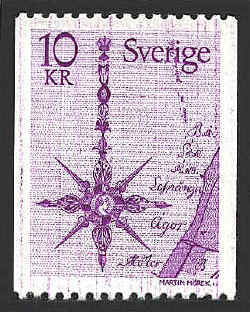|
Before
the compass became a common navigational instrument in the thirteenth
century a "wind rose" was included on charts. North was indicated with
a spear point or fleur de lis, and East was marked with a
cross. The eight principal winds were known by the direction of their
source.
The compass
rose has appeared on charts and maps since the 1300's when the
portolan charts first made their appearance. The term "rose" comes
from the figure's compass points resembling the petals of the
flower. Originally, this device was used to indicate the
directions of the winds (and it was then known as a wind rose), but
the 32 points of the compass rose come from the directions of the
eight major winds, the eight half-winds and the sixteen quarter-winds.
Pedro Reinel drew the first 32 point compass rose.
He, or his son Jorge, also started the tradition of placing a large
compass rose in the empty interior of North West Africa.

Fifteenth Century Compass Rose

Sixteenth Century Compass Rose

Eighteenth Century Compass Rose

The
design for the stamp was derived from a map drawn by Anders Magnus
Steinwall in 1769 to document the partition of land made in the
village of Frandesta, Dingtuna Parish, in the province of Vastmanland.
The central feature of the design is the ornate compass rose with its
long North arrow, and the tiny picture, probably of Adolphus
Frederick, who ruled Sweden from 1751-1711, at the center of the rose.


|
